Faculty
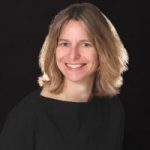
Suzanne Simard, PhD, RPF, is Professor of Forest Ecology, Department of Forest and Conservation Sciences, Faculty of Forestry, University of British Columbia, Canada. At UBC, she has a vibrant research program, a teaching program focused on forest ecology and complexity science, and she is a strong contributor to the forestry profession in Canada. Her research is motivated by her desire for protecting our fundamental right to a clean and healthy environment. She contributes to this goal by conducting scientific research on the synergies and complexities of our natural world and the development of sustainable land stewardship practices that both conserve and protect the environment. Her research is centered on understanding the vital relationships between plants, microbes, soils, carbon, nutrients and water that underlie the adaptability, resilience and recovery of ecosystems. She works primarily in forests, but also grasslands, wetlands, tundra and alpine ecosystems. She is particularly known for her work on belowground networks that connect the creatures of the forest, and how these are fundamental to the complex adaptive nature of ecosystems. She strives to communicate this research so that it is understandable and usable to all people. To that end, she is dedicated to empowering people with science-based knowledge and tools to manage and heal the land from human impacts including climate change.
Current Graduate Students and PDF
Teresa Ryan, PhD, is Postdoctoral Teaching and Research Fellow and TerreWEB Scholar, Department of Forest and Conservation Sciences, Faculty of Forestry, University of British Columbia, Canada supervised by Professor Suzanne Simard. Her research is motivated by her Aboriginal Tsimshian heritage and the guidance provided by her Grandfather to become a fisheries scientist. For her dissertation Dr. Ryan examined colonial dispossession of Aboriginal lands and trade. The ecologic and social harmony enjoyed by Aboriginal peoples was dismantled, with enormous costs to them, to the natural resources, and colonial society. This Aboriginal view is likely to prompt inquiry across disciplines into how Aboriginal cultures and economy are understood. For her argument she used a framework to explore Ancestral ecological-social institution linkages in terms that better portray an Aboriginal viewpoint and the connection of these complex adaptive systems to heterogeneous mosaic landscapes. She demonstrated how thousands of years of sustainable use based on the synergistic Aboriginal knowledge of cyclic resource production and variability was an intuitive component of Aboriginal stewardship. Her current research investigates salmon fishing technology and strategies that were used to increase abundance and maintain salmon biological diversity while contributing marine-derived nitrogen to healthy coastal forests. The synchronicity of salmon and forests are so intertwined that without one the other inevitably shows decline in abundance and vigor. Marine-derived nitrogen is transported into the forests by salmon predators and may then be conveyed along mycorrhizal networks distributing nutrients that otherwise may be scarce locally. Dr. Ryan is also a traditional cedar weaver.
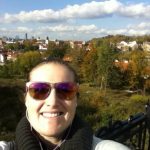 Amanda Asay, PhD with Suzanne Simard, she previously completed a Master of Science under her supervision in the fall of 2013. My scientific interests, during my time at UBC’s Faculty of Forestry, in the Department of Forest and Conservation Sciences, have been focused on kin recognition/selection in interior Douglas-fir and the role mycorrhizal networks play in that interaction. A mycorrhizal network is a series of below-ground mutualistic connections via fungal hyphae and root systems of a plant community. The role of mycorrhizal association are wide reaching including resource acquisition and sharing as well as acting as signalling pathways, potentially for individual (genetic) recognition between individual plants which is where my research focuses. In this context, kin recognition/selection is the ability to detect and respond to the genetic identity of neighbouring trees. If the differential behaviour that results could be interpreted as beneficial to the related individuals as a group, it may be considered kin selection. I hope to provide some original results in this new and exciting field of forest ecology.
Amanda Asay, PhD with Suzanne Simard, she previously completed a Master of Science under her supervision in the fall of 2013. My scientific interests, during my time at UBC’s Faculty of Forestry, in the Department of Forest and Conservation Sciences, have been focused on kin recognition/selection in interior Douglas-fir and the role mycorrhizal networks play in that interaction. A mycorrhizal network is a series of below-ground mutualistic connections via fungal hyphae and root systems of a plant community. The role of mycorrhizal association are wide reaching including resource acquisition and sharing as well as acting as signalling pathways, potentially for individual (genetic) recognition between individual plants which is where my research focuses. In this context, kin recognition/selection is the ability to detect and respond to the genetic identity of neighbouring trees. If the differential behaviour that results could be interpreted as beneficial to the related individuals as a group, it may be considered kin selection. I hope to provide some original results in this new and exciting field of forest ecology.
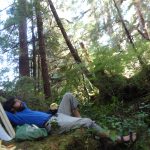 Allen Larocque, PhD with Suzanne Simard, thesis research: Central to ‘the ecological thought’ is a deep message of interconnection. This concept is engagingly symbolized by the existence of Common Mycorrhizal Networks (MNs) – networks of fungal hyphae that connect plants together and establish pathways for nutrient, water, and communication molecules. My project will examine these processes in the ‘salmon forests’ of BC, where the coming of spawning salmon and their subsequent deaths represent a large nutrient pulse that subsidizes the terrestrial ecosystem with marine- derived nutrients. These salmon-derived nutrients are taken up and incorporated by the mycorrhizal fungi of trees and plants, and then may be transferred a considerable distance from the stream through MNs, providing a nutrient subsidy at a distance into the surrounding forest away from salmon-bearing streams and rivers. These nutrients change the dynamics of the forest – forests along a gradient of streams showing different salmon abundance, for example, have different vegetation, insect, and bird communities. The fate of15N in different tree, plant, and soil components can be examined to elucidate seasonal, annual and decadal nutrient fluxes from marine to terrestrial systems. In addition to their effects on nutrient cycling and aboveground biotic communities, the effects of salmon subsidies on soil communities in general has never before been investigated. I propose to examine salmon forests using dendrochronology, heavy isotopes and molecular genetics to elucidate the roles of MNs in mediating nutrient uptake, transfer and cycling by trees, plants, fungi and soils; test and parameterize competing models of network patterns and system dynamics; and investigate the ecological and evolutionary pros and cons of being a MN participant.
Allen Larocque, PhD with Suzanne Simard, thesis research: Central to ‘the ecological thought’ is a deep message of interconnection. This concept is engagingly symbolized by the existence of Common Mycorrhizal Networks (MNs) – networks of fungal hyphae that connect plants together and establish pathways for nutrient, water, and communication molecules. My project will examine these processes in the ‘salmon forests’ of BC, where the coming of spawning salmon and their subsequent deaths represent a large nutrient pulse that subsidizes the terrestrial ecosystem with marine- derived nutrients. These salmon-derived nutrients are taken up and incorporated by the mycorrhizal fungi of trees and plants, and then may be transferred a considerable distance from the stream through MNs, providing a nutrient subsidy at a distance into the surrounding forest away from salmon-bearing streams and rivers. These nutrients change the dynamics of the forest – forests along a gradient of streams showing different salmon abundance, for example, have different vegetation, insect, and bird communities. The fate of15N in different tree, plant, and soil components can be examined to elucidate seasonal, annual and decadal nutrient fluxes from marine to terrestrial systems. In addition to their effects on nutrient cycling and aboveground biotic communities, the effects of salmon subsidies on soil communities in general has never before been investigated. I propose to examine salmon forests using dendrochronology, heavy isotopes and molecular genetics to elucidate the roles of MNs in mediating nutrient uptake, transfer and cycling by trees, plants, fungi and soils; test and parameterize competing models of network patterns and system dynamics; and investigate the ecological and evolutionary pros and cons of being a MN participant.
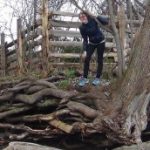 Camille Defrenne, PhD with Suzanne Simard, Camille has been surprised and excited by recent discoveries in fine root research. Surprised? Because we have just started to acknowledge the complexity of fine root systems and are now redefining what we know about them. Excited? Because we have recognized that root traits drive ecosystem processes and we have started to study root trait variation as an indicator of belowground ecological strategies. Camille seeks to keep moving in this direction by studying fine root and mycorrhizal trait variation along an 800 km climatic gradient across BC, from Williams Lake to Nelson going through Kamloops, Salmon Arm and Revelstoke. Her research is focused on interior Douglas-fir. This tree species, native to BC but introduced world-wide, is a good model system because of its broad natural climatic range (from north central BC to northern Mexico), its high variability, and sensitivity to global changes. Across the gradient, Camille will study Douglas-fir traits related to resource foraging strategies, such as architectural and morphological traits as well as mycorrhizal exploration type. The project team has already sampled 150 blocks of 8000 cm3 of soil. In the lab, the process includes extracting roots and mycorrhizae from the soil and analyze them to get insights into the role of belowground components as trees adapt to long-term climatic patterns.
Camille Defrenne, PhD with Suzanne Simard, Camille has been surprised and excited by recent discoveries in fine root research. Surprised? Because we have just started to acknowledge the complexity of fine root systems and are now redefining what we know about them. Excited? Because we have recognized that root traits drive ecosystem processes and we have started to study root trait variation as an indicator of belowground ecological strategies. Camille seeks to keep moving in this direction by studying fine root and mycorrhizal trait variation along an 800 km climatic gradient across BC, from Williams Lake to Nelson going through Kamloops, Salmon Arm and Revelstoke. Her research is focused on interior Douglas-fir. This tree species, native to BC but introduced world-wide, is a good model system because of its broad natural climatic range (from north central BC to northern Mexico), its high variability, and sensitivity to global changes. Across the gradient, Camille will study Douglas-fir traits related to resource foraging strategies, such as architectural and morphological traits as well as mycorrhizal exploration type. The project team has already sampled 150 blocks of 8000 cm3 of soil. In the lab, the process includes extracting roots and mycorrhizae from the soil and analyze them to get insights into the role of belowground components as trees adapt to long-term climatic patterns.
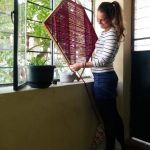 Elana Evans, MSc with Les Lavkulich and Suzanne Simard, is a graduate student in Soil Science under the Faculty of Land and Food Systems and a TerreWEB Scholar at the University of British Columbia, Canada. Her thesis, which focuses on the long-term weathering of the tailings material released during the Mount Polley Mine tailings storage facility failure in August 2014, is supervised by Les Lavkulich. Her interest in soils stems from a deep knowing that without the three-way interaction between the water, the sun and the soil there would be no life as we experience it. The soil is a living system; one that nourishes plants and microorganisms, provides habitat and foundational support, stores carbon, and filters contamination. The weathering of rocks is the primary source of most soil nutrients that ultimately end up in the tissues of leaves, moose, fish, berries and humans. The spill at the Mount Polley Mine site scoured a forested and riparian landscape; a place known to people of the Secwepemc nation as Yuct Ne Senxiymetkwe, “where the woman’s water breaks”. Millions of cubic meters of mine waste material also ended up in Quesnel Lake, an important waterbody for schools of sockeye salmon running to the Fraser to their spawning grounds. Elana’s current research investigates the mineralogy and elemental composition of the terrestrially deposited tailings. These finely ground waste rocks weather with acidic rains and overtime change in composition and metal mobility. Understanding the nutrient release potential from these weathering minerals is critical to understanding the longer-term ecosystem health effects of this mining industry failure. Outside of her academic studies Elana is a farmer, mushroom forager and wool scarf weaver.
Elana Evans, MSc with Les Lavkulich and Suzanne Simard, is a graduate student in Soil Science under the Faculty of Land and Food Systems and a TerreWEB Scholar at the University of British Columbia, Canada. Her thesis, which focuses on the long-term weathering of the tailings material released during the Mount Polley Mine tailings storage facility failure in August 2014, is supervised by Les Lavkulich. Her interest in soils stems from a deep knowing that without the three-way interaction between the water, the sun and the soil there would be no life as we experience it. The soil is a living system; one that nourishes plants and microorganisms, provides habitat and foundational support, stores carbon, and filters contamination. The weathering of rocks is the primary source of most soil nutrients that ultimately end up in the tissues of leaves, moose, fish, berries and humans. The spill at the Mount Polley Mine site scoured a forested and riparian landscape; a place known to people of the Secwepemc nation as Yuct Ne Senxiymetkwe, “where the woman’s water breaks”. Millions of cubic meters of mine waste material also ended up in Quesnel Lake, an important waterbody for schools of sockeye salmon running to the Fraser to their spawning grounds. Elana’s current research investigates the mineralogy and elemental composition of the terrestrially deposited tailings. These finely ground waste rocks weather with acidic rains and overtime change in composition and metal mobility. Understanding the nutrient release potential from these weathering minerals is critical to understanding the longer-term ecosystem health effects of this mining industry failure. Outside of her academic studies Elana is a farmer, mushroom forager and wool scarf weaver.
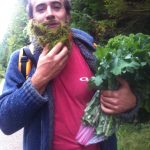 Gabriel Orrego, MSc with Suzanne Simard, Gabriel is from Chile and currently starting his MSc in the faculty of Forestry. He have lived all his life in a nature sanctuary in the Andes Mountains where his family manages a wildlife rescue center. Since he was very young he have worked as a wilderness guide in some of the most remote old growth forests of Chile. His experiences has given him a very strong connection with nature and an endless curiosity about it. A couple years ago, he watched a video featuring University of British Columbia (UBC) professor Suzanne Simard, which showed the complex systems of communication and cooperation between plants. Encountering this concept of plant interaction challenged and changed almost everything that he had been taught up to that moment. In his research he would like to deeply investigate the role of the “Mother Tree” as the source of the underground flux in the transfer of resources between individual trees. He is intrigued by the concept of legacy in old trees, and how this is transmitted from one generation to the next. As a TerreWEB scholar he has the opportunity to communicate his future research. He found out about Mycorrhyzal Network thousands of kilometers away, thanks to the aforementioned video. His objective is to make a smart, attractive and accessible film that would reach Spanish and English speaking people, communicating a review of the work and the latest studies done on the topic. The project will involve the collaboration of filmmakers and media professionals in order to capture and portray the beauty of these forest interactions.
Gabriel Orrego, MSc with Suzanne Simard, Gabriel is from Chile and currently starting his MSc in the faculty of Forestry. He have lived all his life in a nature sanctuary in the Andes Mountains where his family manages a wildlife rescue center. Since he was very young he have worked as a wilderness guide in some of the most remote old growth forests of Chile. His experiences has given him a very strong connection with nature and an endless curiosity about it. A couple years ago, he watched a video featuring University of British Columbia (UBC) professor Suzanne Simard, which showed the complex systems of communication and cooperation between plants. Encountering this concept of plant interaction challenged and changed almost everything that he had been taught up to that moment. In his research he would like to deeply investigate the role of the “Mother Tree” as the source of the underground flux in the transfer of resources between individual trees. He is intrigued by the concept of legacy in old trees, and how this is transmitted from one generation to the next. As a TerreWEB scholar he has the opportunity to communicate his future research. He found out about Mycorrhyzal Network thousands of kilometers away, thanks to the aforementioned video. His objective is to make a smart, attractive and accessible film that would reach Spanish and English speaking people, communicating a review of the work and the latest studies done on the topic. The project will involve the collaboration of filmmakers and media professionals in order to capture and portray the beauty of these forest interactions.
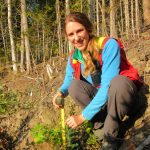 Katie McMahen,
Katie McMahen,
PhD with Suzanne Simard. Following completion of a BSc in Global Resource Systems at UBC in 2011, I moved back to Williams Lake, BC (where I was born and raised) to work in the Environmental Department at the Mount Polley Mine. In my position at the mine I was involved in the reclamation program and contributed to reclamation planning, research and implementation. In 2014, a tailings dam breach occurred at Mount Polley and the resulting disturbance presented a major rehabilitation challenge. The level and type of disturbance, however, also presented a unique environment for conducting research, with the potential for research outcomes to advance reclamation science and best practices.
The objective of my research is to test and apply terrestrial reclamation methods that promote re-development of the soil food web, and in doing so improve vegetation establishment, soil development and ecosystem resiliency. My research program includes a field trial at Mount Polley in the area impacted by the dam breach, as well as greenhouse studies using substrates collected from the mine site.

Monika Gorzelak, PhD with Suzanne Simard, is working on Kin-selected defense-signalling through mycorrhizal networks in interior Douglas-fir. Water, sugar, and nutrients move through the mycorrhizal network, but can defense signals? Recent work has demonstrated that defense signals can also travel through an ectomycorrhizal network between pine and Douglas-fir. What is not known is whether related trees might send signals preferentially to those they are more related to (kin selection). This works aims to determine whether transfer occurs in response to herbivory and whether that transfer is shared equally with all networked trees, hypothesizing that more herbivory warning signals may be sent to kin over strangers.
Alumni
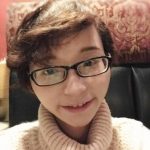 Haojing Xie, Research Assistant in Simard Lab, her research is one part of the site selection of the SPG project including spatial data analysis and large scale maps creation for visual identification. We selected the dominant and subdominant Interior Douglas Fir (Fdi) stands with over 50% coverage. SPG is closely links with the AMAT project, during the recent researches in the AMAT sites, the Mean Annual Temperature (MAT), the Mean Annual Precipitation (MAP), and the Summer Heat Moisture (SHM) variables are proved to have close relationships with the prediction of the Fdi seedlings survival or growth. The current and future climate variable data is collected from the Climate BC. Point relation maps were created later to represent the relationships between the current, the future and the changes of the three climate variables and the basal area (BA) of the dominant Fdi stands. Other researches include predicting the future BA of the dominant Fdi stands in 2080 using the VDVP program and created future prediction maps of the Fd, Lw, and Pp stands. Haojing has a solid experience in GIS mapping and Data analysis.
Haojing Xie, Research Assistant in Simard Lab, her research is one part of the site selection of the SPG project including spatial data analysis and large scale maps creation for visual identification. We selected the dominant and subdominant Interior Douglas Fir (Fdi) stands with over 50% coverage. SPG is closely links with the AMAT project, during the recent researches in the AMAT sites, the Mean Annual Temperature (MAT), the Mean Annual Precipitation (MAP), and the Summer Heat Moisture (SHM) variables are proved to have close relationships with the prediction of the Fdi seedlings survival or growth. The current and future climate variable data is collected from the Climate BC. Point relation maps were created later to represent the relationships between the current, the future and the changes of the three climate variables and the basal area (BA) of the dominant Fdi stands. Other researches include predicting the future BA of the dominant Fdi stands in 2080 using the VDVP program and created future prediction maps of the Fd, Lw, and Pp stands. Haojing has a solid experience in GIS mapping and Data analysis.
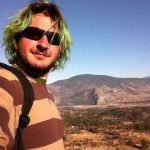 Matt Zustovic, MSc with Suzanne Simard, I am a graduate from the UBC Forestry Natural Resource Conservation program. In the summer of 2011, I began work on a research project focused on Douglas-fir seedling establishment and the influence of mycorrhizal fungi networks in the Southern interior of British Columbia. I’m lucky for the opportunity to continue working on this project and earn an MSc in Forest Sciences. I’m drawn to patterns and the interconnection of systems. The soil system is the confluence of the lithosphere, with minerals of varying size creating the soil matrix; the hydrosphere, percolating through the column creating nutrient solutions; the biosphere, trees and plants that accesses these nutrients through vast root and fungal networks; and the atmosphere, facilitating oxygen exchange for the multitude of soil biota that continually cycle nutrients for reuse. It’s a very beautiful system and I’d like to learn more. My research will focus on the effect of gap size from forest harvesting on Douglas-fir (pseudotsuga menziezii) seedling establishment and the effect of ectomycorrhizal fungi associations. Ectomycorrhizal fungi bonds to the root systems of trees in a mutually beneficial relationship: The fungus gains access to atmospheric carbon through the tree, and the tree gains access to water and nutrients in small interspaces that the roots are usually too large for. Where it gets really fun is when mycorrhizal fungi associate with multiple trees and create a network of accessible water and nutrients that trees and plants can tap into.
Matt Zustovic, MSc with Suzanne Simard, I am a graduate from the UBC Forestry Natural Resource Conservation program. In the summer of 2011, I began work on a research project focused on Douglas-fir seedling establishment and the influence of mycorrhizal fungi networks in the Southern interior of British Columbia. I’m lucky for the opportunity to continue working on this project and earn an MSc in Forest Sciences. I’m drawn to patterns and the interconnection of systems. The soil system is the confluence of the lithosphere, with minerals of varying size creating the soil matrix; the hydrosphere, percolating through the column creating nutrient solutions; the biosphere, trees and plants that accesses these nutrients through vast root and fungal networks; and the atmosphere, facilitating oxygen exchange for the multitude of soil biota that continually cycle nutrients for reuse. It’s a very beautiful system and I’d like to learn more. My research will focus on the effect of gap size from forest harvesting on Douglas-fir (pseudotsuga menziezii) seedling establishment and the effect of ectomycorrhizal fungi associations. Ectomycorrhizal fungi bonds to the root systems of trees in a mutually beneficial relationship: The fungus gains access to atmospheric carbon through the tree, and the tree gains access to water and nutrients in small interspaces that the roots are usually too large for. Where it gets really fun is when mycorrhizal fungi associate with multiple trees and create a network of accessible water and nutrients that trees and plants can tap into.
Julia Amerongen Maddison, MSc with Suzanne Simard
Frederico Osorio, PhD with Suzanne Simard
Research Associate
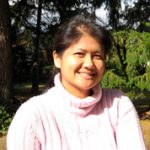
Alice Chang is the Lab Manager for the Belowground Ecosystem Group and looks after daily safety and operation of the labs. She also manages the Stable Isotope Facility in the Department of Forest and Conservation Sciences. For more information, please go to: http://isotopes.forestry.ubc.ca/. Alice continues to do earth and ocean sciences research on the side (for fun!).
Affiliate
Brian Pickles is the Lecturer in Ecology in the University of Reading and Co-supervision of Postgraduate Students at the University of British Columbia.
